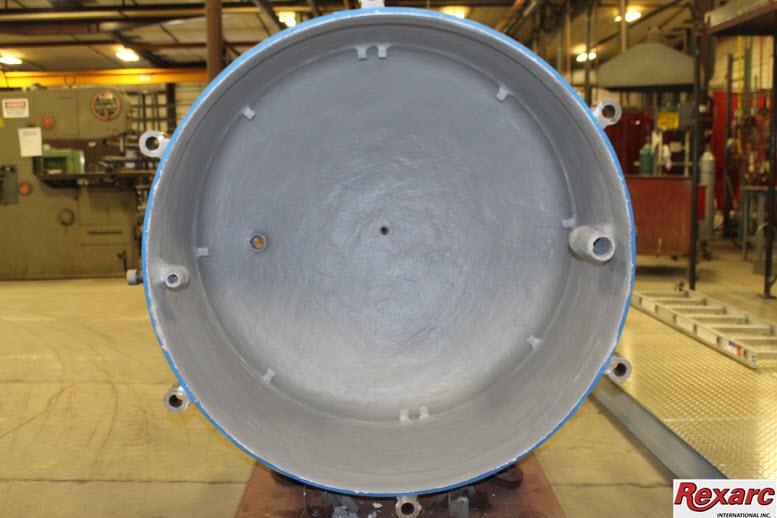Rexarc is currently open from 7:30 AM – 4:00 PM EST, Monday – Friday. Read More
Rexarc is currently open from 7:30 AM – 4:00 PM EST, Monday – Friday. Read More

During the process of acetylene production, the chemical reaction produces some amount of heat. The amount of heat dispelled during generation is monitored to ensure that it is not excessive. Heat is further reduced during the purification process and under normal operating conditions, should not become an issue.
However, during the process of regenerating purification material, heat is usually created in the purifier. If the temperature of the purifier increases disproportionately in isolated spots or places, this is known as hot spots which may result in damage to the purifier liner if not corrected. Understanding the causes and corrective actions of purifier hot spots will increase the safety of your operations as well as the life of your purifier.
Hot spots can be caused by:
If hot spots are being formed in your purifier, it can be reversed by following the below-mentioned steps:
Open the purifier vent valve in the following manner:
a. Open the vent
b. Close the purifier outlet valve
c. Close the valves at the bottom of the generator flashback arrestors
d. Open the purifier vent valve
a. Once the purifier vent valve has been opened, the pressure in the purifier should drop one lb. in five seconds and continue decreasing.
b. If the pressure drops in this manner, close the purifier and the inlet valve.
c. In case the pressure does not drop, the purifier vent might be blocked. This can be resolved by venting out the pressure from the flashback arrestor safety valves. Maintain the pressure at 6 psig or less.
a. Connect two nitrogen cylinders to the reactivation hose that passes through the purifier.
b. Force the nitrogen through the purifier. The nitrogen cylinder regulator should be set at 5 psi and 50 CFH flow.
c. At the same time, run water on the purifier vessel until the temperature of the cabinet is approximately 98 deg F.
(If more nitrogen is needed, additional cylinders should be connected and used until the temperature is reduced.)
d. Before reactivation, pressurize the purifier four times with nitrogen. After each time, it will be necessary to vent the pressure to remove all traces of acetylene from the purifier.
a. The purifier is now ready for reactivation. Disconnect the nitrogen flow and connect the airline.
b. Proceed to pass air through the cabinet at 50 CFH for eight hours.
c. The purifier should now be at room temperature. If it is not, then continue reactivation until the acetylene purifier reaches room temperature.
d. When the purifier nears room temperature, close the vent valve. Allow the pressure to build up to 5 psi and then vent the pressure.
e. Check for increase in temperature. If the temperature does not increase, pressurize to 10 psi and vent the pressure. Repeat two more times.
f. If the purifier has warmed up, continue reactivation until it reaches room temperature.
g. Remove the lid and check the purifying material for moisture content. If the material is dry, bypass all acetylene around the low pressure dryer.
h. If you are cooling the cooler condenser with well water, reduce the water flow such that the acetylene going into the purifier is a little warmer than the purifying material.
i. The purifier is now ready to be used.
Important Note
After reactivation, check the purifier in fifteen-minute intervals to determine if there is occurrence of heat buildup during the cylinder charging process. This problem is most likely to occur during the first four (4) hours after reactivation.
The safety and efficiency of an acetylene plant is dependent on the functioning of the various components and parts of the plant. Hence, it is important that the plant is serviced in accordance with the procedures outlined in the operator’s manual. Plant owners can also opt for a preventive maintenance plan that helps reduce failure rate of parts and ensures seamless functioning of the plant at all times. Customized preventive maintenance kits are available that include spares and other parts that can help implement a preventive maintenance plan.

We are a one stop shop from custom vessel production to full skidding, plumbing and instrumentation.

We stand by our processes and communicate with you on your project status as much or as little as you would like.

We continually reinvest in our people, business, and equipment technology to ship quality products on time.
